|












2003
Maine Wastewater Salary Survey as conducted by the Maine Wastewater Control
Association

2003 Maine
Wastewater Rate Survey conducted by the Maine Rural
Water Association

Maine DEP Monthly
O & M Newsletter
Maine and WEF's
Operation Forum
Penobscot Watershed and Development of a TMDL
EPA Binational Toxics
Strategy
Maine Rural Water
Association
Maine Wastewater
Operator Certification
Guide
Maine Is Technology
Newsletter
Maine
Wastewater Control Association
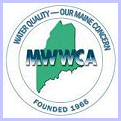
Maine
Wastewater Engineering
Firms
| |
AERATED
LAGOON TECHNOLOGY

by
Linvil G. Rich
Alumni Professor Emeritus
Department of Environmental
Engineering and Science
Clemson University -
Clemson, SC 29634-0919 USA
Email: lrich@clemson.edu;
Tel. (864) 656-5575; Fax (864) 656-0672
Technical Note Number 9
SLUDGE ACCUMULATION IN
HIGH-PERFORMANCE
AERATED LAGOON SYSTEMS
High-performance aerated lagoon systems are defined here as aerated
lagoon systems that can, on a consistent basis, meet both a TSS and a BOD5
effluent limit of 30 mg/L. Since most of the TSS and BOD5 in the effluents of
lagoons treating domestic wastewaters are the result of algae growing in the
lagoons, the design of the lagoons must include features that minimize such
growth. One of the features, a limited hydraulic retention time, conflicts,
however, with required sludge storage capacity. As a result, the
high-performance lagoon system will have a much smaller foot print and greater
sludge depth than do most systems for which sludge accumulation data has been
determined. Furthermore, little information is available as to the solids
content of these sludges. Both sludge accumulation rates and solids contents
are important factors in the rational design of high-performance lagoons.
DPMC LAGOONS
Dual-power, multicellular (DPMC) aerated lagoons can be classified
as high-performance systems. The evolution and design of DPMC lagoons are
discussed elsewhere (Rich 1982a, 1982b, 1985, 1996, 1999). Basically, the
lagoons consist of a reactor cell with a retention time of 1.5 to 2.5 d which
is aerated at a level that will maintain most of the solids in suspension,
followed by three settling cells in series, each with a retention time of 1 d
and aerated at a level that will permit the settleable solids to settle yet
maintain dissolved oxygen in the water column. By aerating the first cell at a
level that will keep most solids in suspension, sufficient turbidity is
maintained in the cell to minimize the growth of algae. Consequently, growth
potential for such organisms exists primarily in the settling cells. Many DPMC
systems are presently in operation in South Carolina and other regions with
similar climates. Although nitrification will occur in most DPMC systems,
especially in the warmer months, such nitrification is erratic and should not
be depended upon to meet an effluent limit. The lagoons are strictly for
carbon removal in temperate climates.
Early in the acceptance of DPMC lagoons as secondary treatment systems,
concern was expressed as to the frequency at which sludge would have to be
removed from the systems and how would the accumulating sludge with the
resulting reduction in retention time impact performance. In absence of
long-term operating performance, reliance had to be placed both on an assumed
fraction of nonbiodegradable solids in the influent wastewater and an estimate
of the sludge solids percent of the accumulated sludge in order to predict
accumulation rates (Rich 1985). No attempt was made to predict the effect that
reduced retention time would have on performance.
SLUDGE ACCUMULATION
One of the earliest DPMC lagoons to be constructed is located in
Berkeley County, South Carolina. As is typical for these lagoons, the lagoon
basin is divided into cells by floating curtain walls, and the water depth in
the lagoon is 3 m (10 ft). Placed in operation in 1986, the flow into the
lagoon has remained at about 40 percent of the design flow of 17.52 L/s (0.400
MGD). Sludge has never been removed from the system. Figure 1 illustrates the
sludge accumulation depths in the four cells as of June 2002. Each depth is
the average of five in situ measurements at different locations within the
cell. The accumulation of sludge found in the first cell can probably be
attributed to a combination of factors: regions of lower turbulence levels
between the surface aerators, influent sand, and leakage from the second cell
under or around the floating curtain wall separating the first and second
cells. Distribution in the settling cells is what one would expect,
accumulation varying with distance from the first cell. Based on cell size,
estimates indicate that sludge now occupies approximately 58 percent of the
lagoon volume. The long-term effluent record for the lagoon is shown in Table
1. The effluent statistics are based on a log-normal distribution of data
obtained from monthly discharge monitoring reports submitted to the state
regulatory agency. The statistics at the top of Table 1 extend from January
1990 to June 2002, a period of 12.5 years. For comparison, averages of the
effluent TSS and BOD5 are given below for the recent 2.5 year period extending
from January 1999 to June 2002. It appears that sludge accumulation has had
little or no effect on performance. Long-term
sludge accumulation rates for two DPMC systems are presented in
Table 2. For the Berkeley County lagoon, the rate measured for the 16 year
period is less than that for the 7 year period. Such reduction can be
explained by the further consolidation of the sludge resulting from additional
stabilization and increasing weight of sludge on the bottom solids. For
domestic wastewaters, these accumulation rates provide estimates with which
the sludge storage requirements can be determined in the design of DPMC
lagoons. Alternatively, storage requirements can be determined from estimates
of typical sludge solids percentages and estimates of the nonbiodegradable
solids in the settling sludge.
SLUDGE SOLIDS PERCENT
Properties of sludges measured at the bottom of four South Carolina
DPMC lagoons are presented in Table 3. Values in the table were obtained from
samples taken from the bottom of the lagoons with sludge samplers. All four
lagoons treat domestic wastewater. The variation observed in sludge solids
percentages probably is due, for the most part, to sand that is carried into
the lagoons by the sewage. This is reflected in the variation observed in the
volatile solids percentages.
Sludge properties will vary from top to bottom of the sludge layer. Bryant
(1983) found that the percent solids of a deposit of activated sludge which
was added to on a weekly basis increased from 1.2 to 2.4 percent in 15 weeks.
Rich and Conner (1982) in another study involving activated sludge solids
added intermittently to a deposit found that the percent solids at the bottom
of the deposit was 3.25 percent at the end of 42 weeks. Evidently, for such
deposits the percent solids varies in a parabolic relationship with time.
DISCUSSION
At the present, insufficient information is available to estimate
sludge accumulation rates based on percent sludge solids and percent volatile
solids. Needed are these properties at the top of the sludge and at least one
intermediate depth. However, sludge accumulation rates based on volume can be
estimated using the information given in Table 2. Furthermore, in spite of the
relatively short hydraulic retention time provided for in DPMC lagoons, it
appears that the performance is unaffected by significant sludge accumulation.
Bryant, C. W. Jr. (1983). "Benthal
stabilization of organic carbon and nitrogen." Ph. D. Dissertation, Clemson
University, Clemson, SC.
Matthews, J. (2002). Private communication. On-line Environmental, Inc.,
Gilbert, SC 29054.
Ouzts, C. (2002). Private communication. Berkeley County Water and
Sanitation Authority, Goose Creek, SC 29445.
Rich, L. G. (1982a). "Design approach to
dual-power aerated lagoons."J. Envir. Engrg., ASCE, 108(3), 532-548.
Rich, L. G. (1982b). "Influence of multicellular configurations on algal
growth in aerated lagoons." Water Res., 16, 1419-1423.
Rich, L. G. (1985). "Mathematical model for
dual-power, multicellular (DPMC) aerated lagoon systems." Mathematical
models in waste water treatment, S.E. Jorgensen and M. J. Gromiec, eds.,
Elsevier, Amsterdam, The Netherlands.
Rich, L. G. (1996). "Modification of design
approach to aerated lagoons." J. Envir. Engrg., ASCE, 122(2), 149-153.
Rich, L. G. (1999). High Performance
Aerated Lagoon Systems, American Academy of Environmental Engineers.
Annapolis, MD.
Rich, L. G. and Connor, B. W. (1982). "Benthal
stabilization of activated sludge solids." Water Research, 16, 1419-1423.
TITLES OF FIGURES
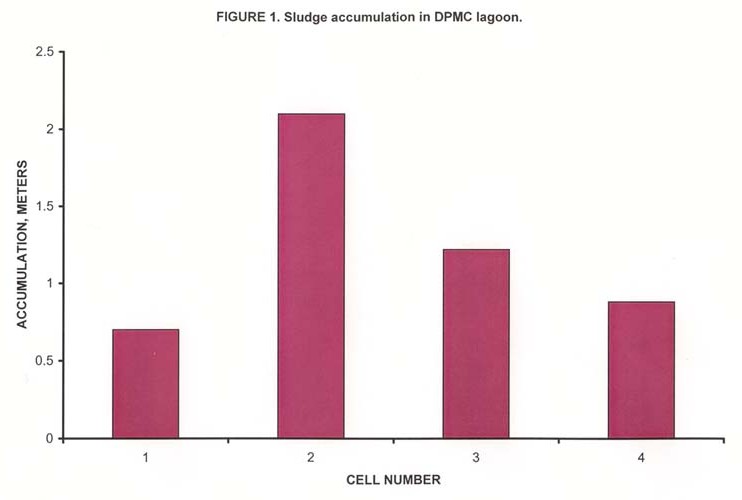
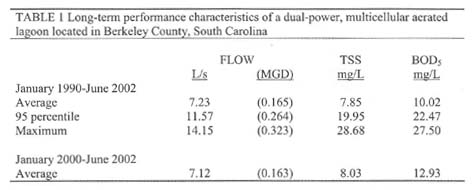
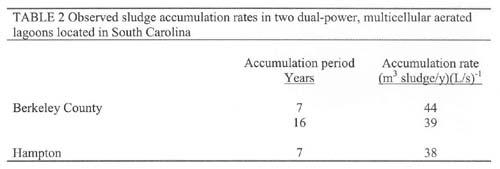
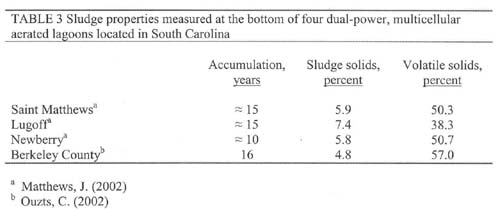

|

